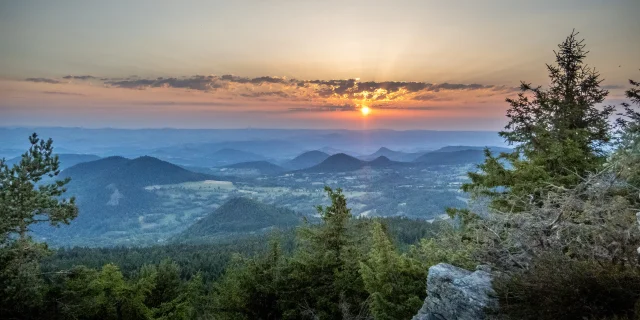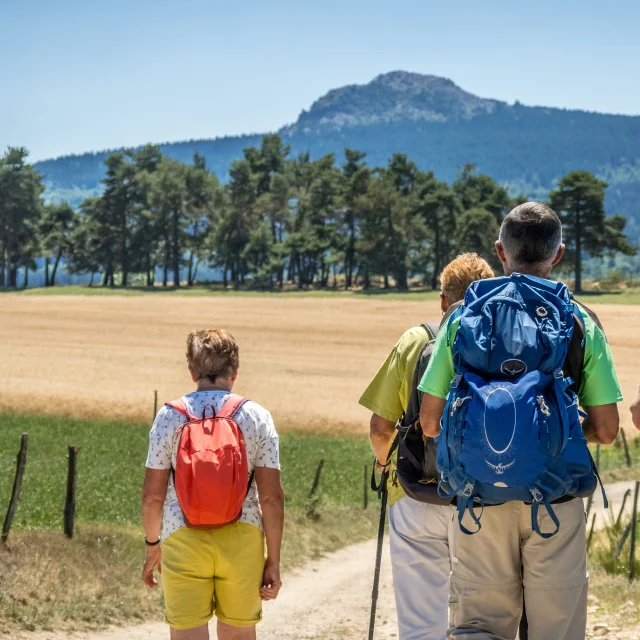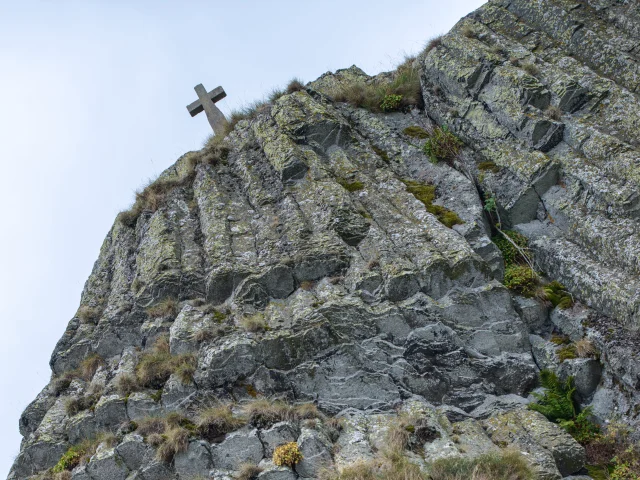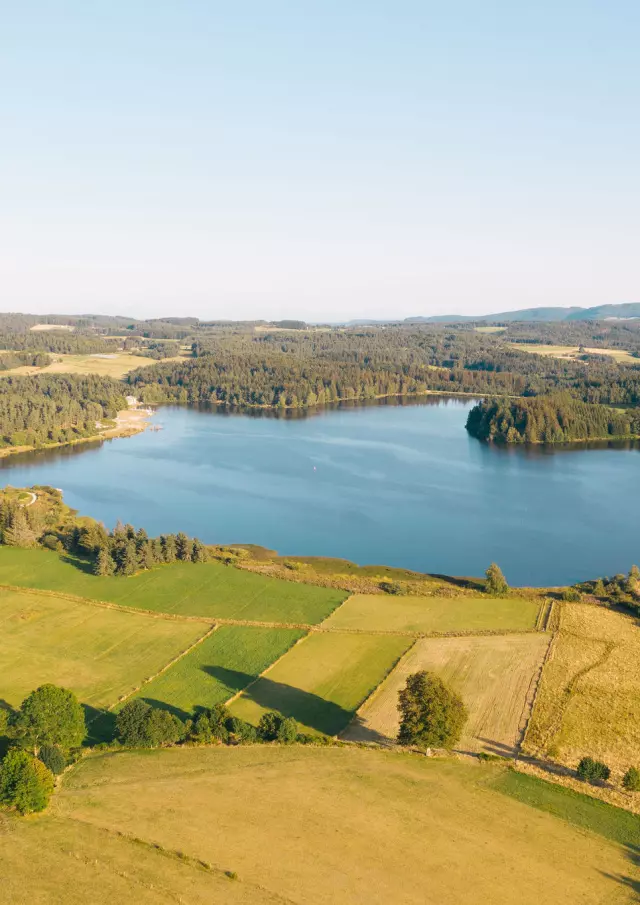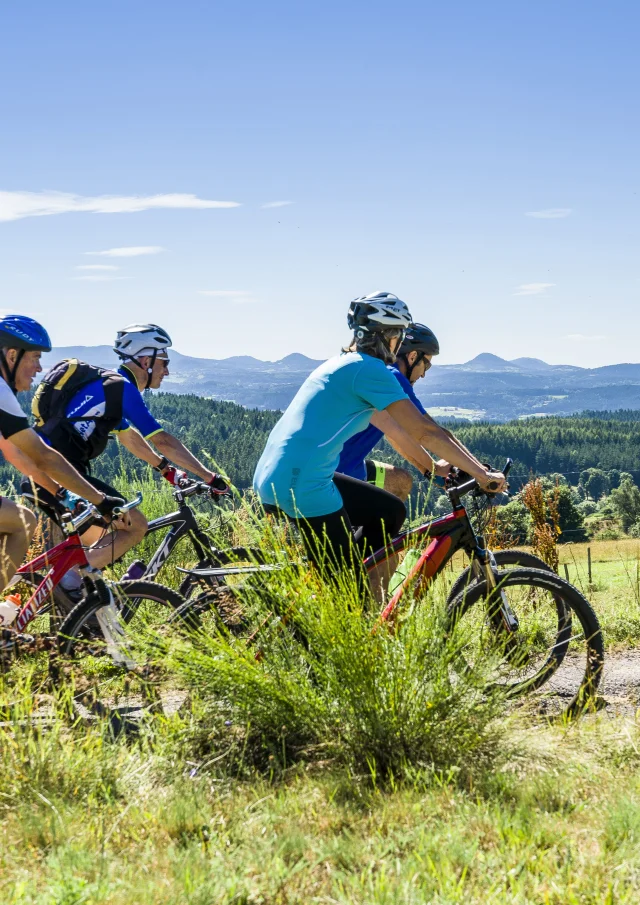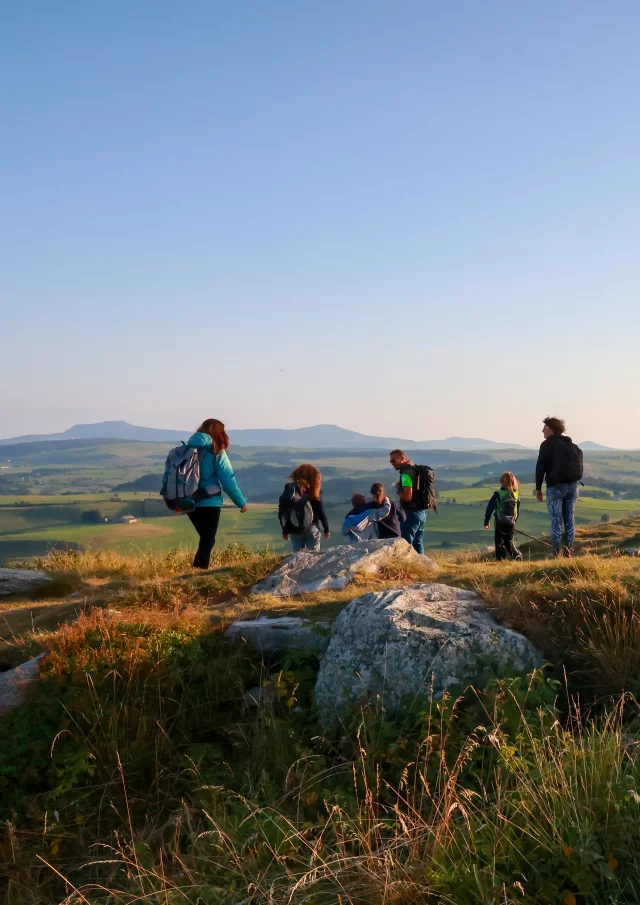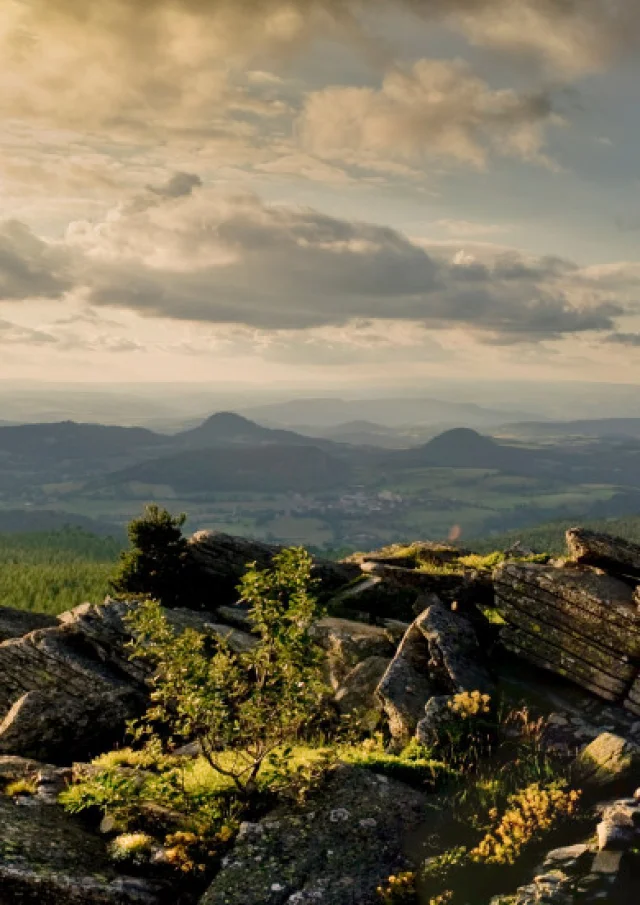Here on the Plateau, Fred explains that the last eruptions were only 40,000 years ago! and that there are almost 180 volcanoes in the Haute-Loire.
Off we go to Suc d’Achon near St Jeures. This is a so-called “phonolithic” volcano, with a sugar-loaf dome and no crater. The lava was very viscous and solidified on site. Suc des Ollières emerges.
It’s a rather local word for a rounded summit, so it has a topographical meaning.
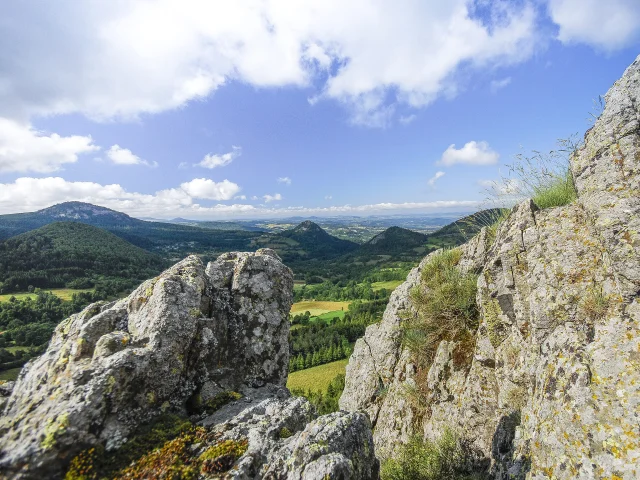 Lessucsdumeygallucolivier
Lessucsdumeygallucolivier